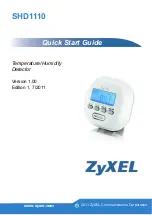
Instructions for the DeviceNet
®
Product
Instruction Leaflet
IL17559 Rev. D
Operated Network Interface (DPONI)
Effective August 2009
EATON CORPORATION
www.eaton.com
3
CAUTION
DE-ENERGIZE THE DEVICE TO WHICH THE DPONI WILL BE
ATTACHED OR WIRED. OTHERWISE, IMPROPER OPERATION OF OR
DAMAGE TO THE EQUIPMENT MAY OCCUR.
The DPONI
The DeviceNet® Product Operated Network Interface (DPONI)
enables communications between a DeviceNet network master
station and a host device in a master/slave format over a
DeviceNet network. The DPONI is compatible with the MP-
3000 and MP-4000. The DPONI is powered by the host product
to which it is attached as well as by the DeviceNet network. The
DPONI uses opto-couplers to isolate the two power systems.
The DPONI communicates at 125 Kbps or 250 Kbps, selected via
a front panel DIP switch. 500 Kbps is fully supported. All
products on the DeviceNet network must be set at the same
communications (baud) rate. A baud rate setting with both
switches set to the “up” or “1” position is illegal. If they are set
this way at startup, the DPONI will not operate.
The DPONI has a bicolor network/module status LED that
functions in accordance with the DeviceNet specification. An
additional monocolor LED flashes while the DPONI is receiving a
message from the host device.
Figure 1. The Eaton Cutler-Hammer DPONI.
DPONI DeviceNet Basics
The maximum number of DeviceNet nodes is limited to 64.
Therefore, the DeviceNet protocol limits addresses to a range of
0 to 63, with address 0 reserved for the DeviceNet master.
Setting the address switches to any value greater than 63 is
Illegal. If the address switches are set to values higher than 63 at
startup, the status LED will be solid red and the DPONI will not
operate. The DPONI supports explicit mode and polled I/O
connections. Volume 3 of the CIP Networks Library provides details
of these communications modes.
The DPONI must be reset following an address change via the
address switches by removing power from the DPONI host
connection. This can be accomplished by cycling power to the
host device.
The DPONI allows monitoring and control only. Changing
setpoints is not supported. The DPONI is a Group 2 DeviceNet
product. Group 4 functionality is not supported.
Installation
The DPONI is designed to be installed, operated, and maintained
by adequately trained personnel. These instructions do not cover
all details, variations, or combinations of the equipment, its
storage, delivery, installation, check-out, safe operation, or
maintenance.
The installer must comply with the National Electric Code and
local codes or regulations, as well as safety practices, for this
class of equipment.
The following instructions apply to installation.
1.
Ensure that mounting screws for the DPONI have been
included.
Item Qty.
#8-32 X 1-1/8” Screw
2
2.
Check the instruction leaflet mounting instructions for a
DPONI compatible host device. The following steps cover
the common examples of mounting instructions. In all
cases, the DPONI is to be mounted in a horizontal manner.
3.
Disconnect power to the host device. Mount the DPONI to
the threaded head stacking screws of the power module
with the screws included with the DPONI. Mount the
DPONI with the LEDs on top and the ribbon cable on the
right. Connect the ribbon cable from the DPONI to the
receptacle of the host device (see Figure 2). Screw the plug
lock assembly tight.
Figure 2. Attaching the Ribbon Cable to the Host Device’s
Plug Lock Assembly.
4.
Plug the DeviceNet into the device using the 5-point terminal
block. Repower the host device. The DPONI earth ground
(GND) wire must be mounted to the host device chassis, as
shown in Figure 3.
Figure 3. Mounting of DPONI Device.




































